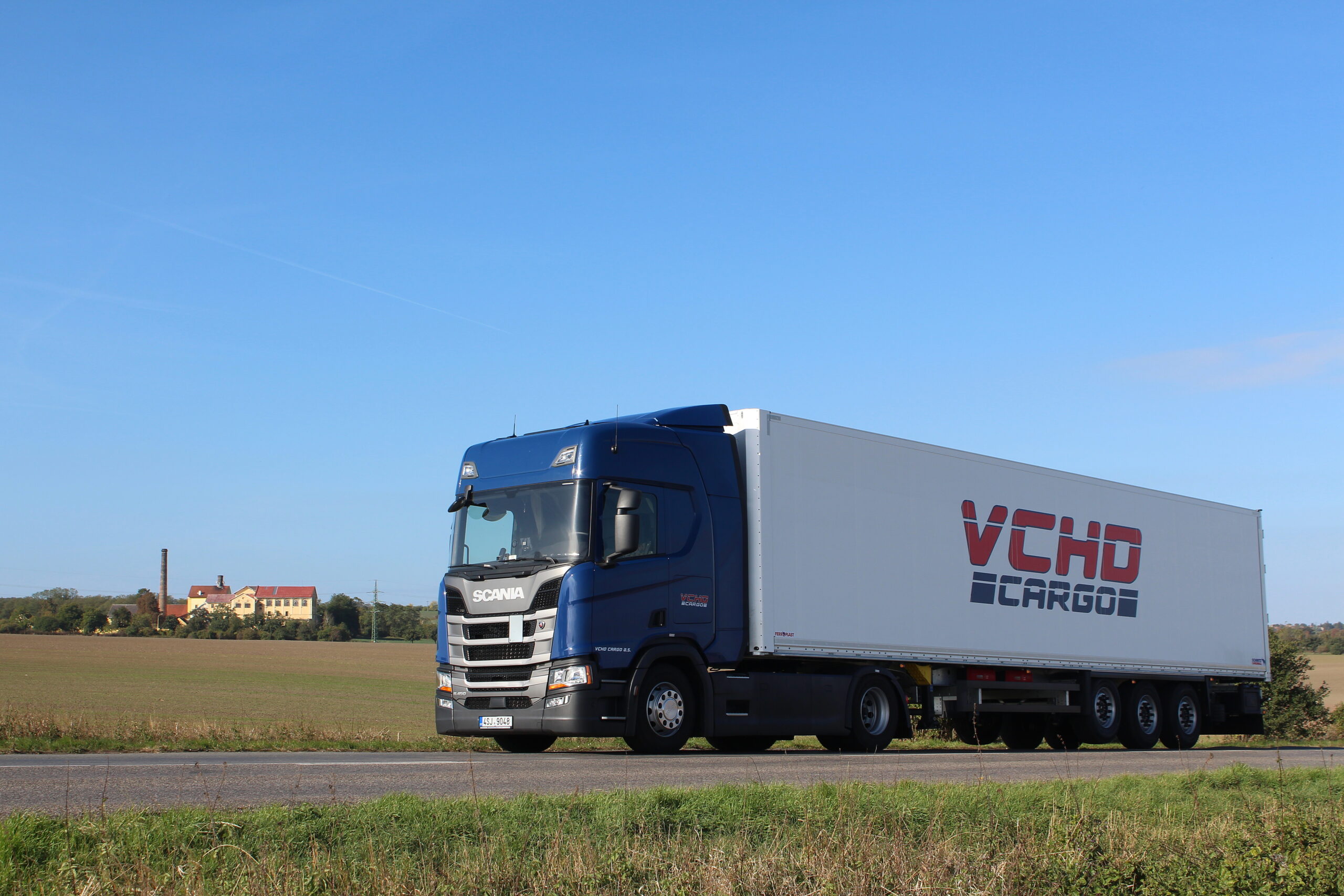Effective transport planning is a key factor in meeting time commitments and achieving the most efficient result both economically and environmentally. VCHD Cargo plans the routes of its more than 230 trucks using sophisticated IT technology and the practical, long-standing experience of its drivers.
VCHD Cargo’s trucks carry out transports for customers in the logistics, manufacturing and retail sectors. “When setting up new routes for our lines, we rely on several basic sources of information – we use a paid application that is specialised in planning truck transports and allows the user to set a number of parameters. Here we enter our specific requirements and those of our customers,” says Ing. Petr Kozel, CEO and Chairman of the Board of VCHD Cargo, adds, “At the same time, we rely on quality data obtained from real operations, both through IT and by transferring the experience of our drivers.” In the case of a new transport, the company will model the route using software. In addition, it will use data from vehicles already operating on routes that replicate some sections of the new route. Each vehicle is GPS-monitored by the company and its journeys are recorded and evaluated to ensure that it is delivered accurately according to the customer’s order and that it runs economically. “In this way, we have a comprehensive and constantly updated database of our routes and orders and can compare how long it took a particular vehicle to travel a section. Of course, we also take into account the experience of the drivers themselves. But the main “work” in the initial route selection is done by IT,” says Petr Kozel. In addition, VCHD Cargo tests each modelled route before the line is launched.
The company uses an application that allows setting the parameters of the rolling stock, departure time, number of drivers, passage locations and the number of loading/unloading points. It can also calculate the number of kilometres, toll rates by state and by mileage, and gives the time consumption of the route to the merchants and dispatchers modelling the route. It updates toll rate changes according to changes in the scheduled departure date. The application allows to display several optimal routes with gradations according to cost and time increase. As VCHD Cargo’s customers often request ADR dangerous goods shipments, all of the company’s vehicles are equipped to transport such shipments. “Of course, ADR transports have their own specifics when it comes to route selection,” says Petr Kozel, adding, “in this case, too, we are assisted by an IT solution that allows us to enter ADR into the conditions for searching for the optimal route, which then eliminates all sections where trucks with ADR goods are not allowed to pass. Typically these are water sources, tunnels and so on.”
When selecting a route, it is also necessary to take into account the conditions at the customer’s site. The facilities of some companies do not yet have ramps adapted for truck transport and are not accessible with a rig but only with a tow truck. On the other hand, it is an advantage if the customer uses swap bodies. They have a higher capacity and, thanks to the possible pre-loading, are one of the tools to reduce the vehicle time spent on loading.
VCHD Cargo also plans the route with economical driving in mind “The number of “stops”, as we call them, directly affects fuel consumption and therefore the carbon footprint of the transport. That’s why we try to communicate well in advance with our customers what the transport will look like and plan the route accordingly, including the mandatory stops for our drivers.”
The majority of VCHD Cargo’s long-haul transports are carried out by several crews, which rotate on routes of hundreds of kilometres to ensure that the cargo can be delivered to its final destination as quickly as possible. The drivers use a network of 25 comfortable service apartments on backbone routes throughout Europe, which provide them with quality facilities for their mandatory breaks.

